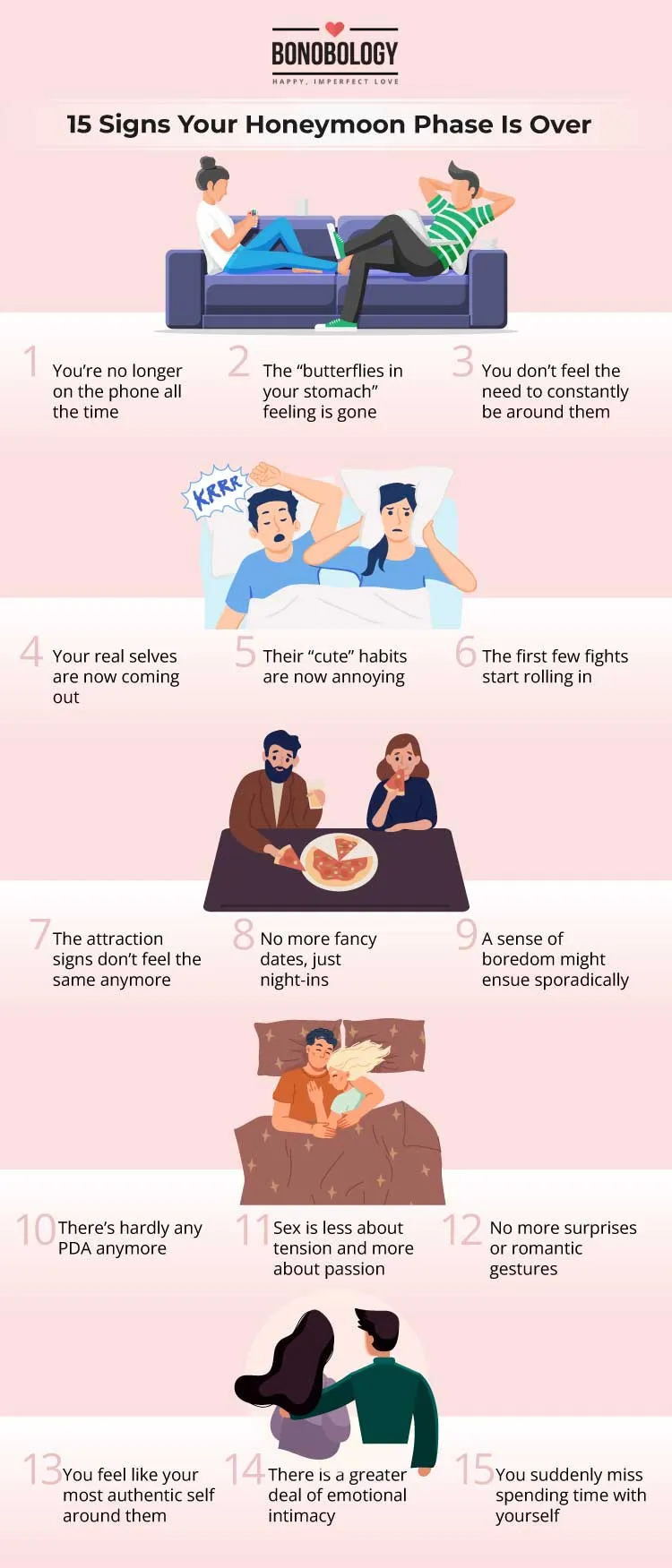Understanding the Honeymoon Phase
The honeymoon phase, a period of intense romance, passion, and idealization at the beginning of a relationship, is a universally recognized phenomenon. It’s a time filled with butterflies, overwhelming attraction, and a tendency to see the best in your partner. During this period, couples often experience heightened feelings of love, excitement, and a deep desire to spend as much time together as possible. However, it’s important to understand that this phase is a temporary state, and recognizing its characteristics is crucial for navigating the subsequent stages of a relationship. Recognizing and understanding this phase helps couples to be realistic about their relationship.
What is the Honeymoon Phase?
The honeymoon phase is characterized by several key elements. It is a period of infatuation and idealization, where partners tend to overlook each other’s flaws and focus on positive attributes. Communication is frequent and often filled with compliments, expressions of affection, and a strong desire to share every aspect of their lives. Physical intimacy is often heightened, with a deep longing for physical connection. There is a general sense of excitement, and the relationship feels new and thrilling. This phase provides a foundation to build a strong bond, understanding it helps manage the expectations and helps to grow in the long term.
How Long Does the Honeymoon Phase Last?

The duration of the honeymoon phase varies from couple to couple. It can last anywhere from a few months to a couple of years. There is no set timeline, and the length is influenced by factors such as individual personalities, relationship dynamics, and life circumstances. Some couples experience a shorter, more intense phase, while others enjoy a longer, more gradual transition. The most important thing is to be aware that it will eventually end. The fading of the honeymoon phase is not necessarily a negative thing; it’s a natural progression in the evolution of a relationship. It provides an opportunity for the couples to build a more stable, deeper, and authentic connection.
7 Signs Your Honeymoon Phase Is Ending
Recognizing the signs that the honeymoon phase is coming to an end can help you prepare for the next phase of your relationship. It’s a normal transition and can lead to a more authentic and fulfilling partnership. Awareness of these signs can help couples navigate the shift with grace and understanding. Itu2019s an indication of moving from infatuation to a more mature and realistic connection. This shift does not mean the love is gone, but the focus is now on deeper and lasting connections.
Decreased Affection and Intimacy
One of the first signs that the honeymoon phase is waning is a decrease in physical affection and intimacy. The constant hand-holding, kissing, and cuddling may become less frequent. The initial intense physical attraction can give way to a more steady and sustainable level of intimacy. This change can be a natural part of the relationship, reflecting a shift from the intense passion of the early stages to a more comfortable and relaxed connection. It is essential to maintain physical and emotional intimacy in a relationship. Remember that regular intimacy is essential for long-term stability, and even small gestures of affection can go a long way in fostering a deep connection.
Increased Conflict and Arguments

As the honeymoon phase ends, couples may find themselves disagreeing more often. Minor annoyances or differences in opinions that were overlooked earlier might surface, leading to arguments or conflicts. This is because you are beginning to see your partner as they truly are, with all their flaws. Addressing conflicts healthily and finding resolutions is a crucial part of navigating this phase. Practicing active listening, communicating your needs, and understanding each other’s perspectives are essential for managing conflicts constructively and ensuring long-term stability.
Changes in Communication Patterns
During the honeymoon phase, communication is often frequent, exciting, and filled with positive affirmations. As this phase ends, the volume and nature of communication may change. Conversations might become less frequent, and the focus may shift from getting to know each other to practical matters and daily routines. Itu2019s important to maintain open and honest communication, which is vital for a healthy relationship. This means expressing your feelings, sharing your thoughts, and listening actively to your partner. Effective communication allows couples to navigate challenges and maintain a strong emotional connection.
Emergence of Annoyances and Irritations
During the honeymoon phase, partners tend to overlook each other’s flaws. As the initial infatuation fades, you may start noticing the little things that irritate you about your partner. These annoyances can range from small habits to fundamental differences in lifestyle or personality. Acknowledging these irritations is a natural part of getting to know your partner more deeply. Instead of suppressing these feelings, couples should learn to communicate them constructively, express their needs and expectations, and work together to find compromises that maintain harmony.
Shifting Priorities and Interests

In the beginning, couples often prioritize spending all their time together. As the honeymoon phase concludes, individual priorities and interests may resurface. Partners may spend more time pursuing their hobbies, socializing with friends, or focusing on their careers. This shift is not necessarily a sign of a problem, but rather a natural reflection of individual growth and development. Supporting each other’s interests and allowing space for individual pursuits is essential for maintaining a healthy balance in the relationship. Encourage and respect each other’s autonomy while still prioritizing the connection.
Feelings of Disappointment or Disillusionment
The honeymoon phase involves a degree of idealization, and it’s common to feel disappointed or disillusioned when reality sets in. As you begin to see your partner more realistically, you might realize that they are not perfect. This can lead to feelings of disillusionment or a sense that the relationship isn’t as exciting as it used to be. It’s important to recognize that these feelings are normal. Instead of focusing on what is missing, shift your perspective to focus on building a deeper, more authentic connection. Celebrate and cherish the positive aspects of the relationship, such as shared values, mutual respect, and support.
Loss of the ‘Honeymoon’ Glow
One of the most noticeable signs that the honeymoon phase is ending is a general fading of the intense emotions that characterized the beginning of the relationship. The constant excitement, butterflies, and overwhelming feelings of love can subside. While it may feel sad, it’s important to recognize that this does not mean the love is gone. It is a natural progression towards a more sustainable and realistic relationship. The focus shifts from the initial thrill to building a solid foundation based on trust, respect, and shared values.
Navigating the Transition

The transition from the honeymoon phase can be a challenging time for couples, but it can also be a significant opportunity for growth and deepening the relationship. Couples can cultivate a deeper, more authentic connection by understanding the signs of the end of the honeymoon phase and embracing this transition. This is a time to build a strong relationship. Open communication, willingness to accept your partner’s flaws, and a commitment to building a lasting relationship are essential.
Communication is Key
Open and honest communication is vital for successfully navigating the transition from the honeymoon phase. Share your feelings, needs, and expectations with your partner. Discuss any concerns or challenges, and be willing to listen to their perspective. Regular check-ins and discussions about the relationship will help you navigate any issues and maintain a strong, intimate connection. Make sure to keep the lines of communication open.
Maintain Intimacy and Connection
As the initial intensity of the honeymoon phase fades, actively working to maintain intimacy and connection becomes more important. Schedule regular date nights, engage in shared activities, and make an effort to show affection and appreciation. Prioritize physical and emotional intimacy, and be mindful of your partner’s needs. Cultivate moments of connection, where you can put your phones aside, turn off the TV, and just be with each other. These moments help you stay connected.
Embrace the Next Phase

Recognize that the end of the honeymoon phase does not mean the end of your relationship. It’s a normal progression that opens the door to a deeper and more meaningful connection. Accept your partner’s flaws, embrace your differences, and celebrate your shared values. Focus on building a solid foundation based on trust, respect, and mutual support. Embrace the opportunity to create a more sustainable and fulfilling relationship. With effort, understanding, and a willingness to grow together, you can build a relationship that is even more rewarding than the honeymoon phase.
